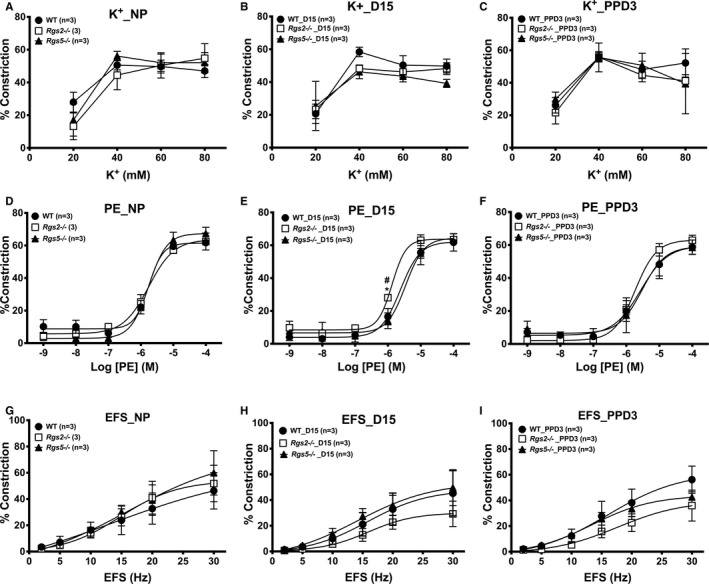Figure 7.

Contractile response of mesenteric arteries from wild type (WT), Rgs2−/−, and Rgs5−/− mice to high‐potassium (K+) solution, phenylephrine (PE), and electrical field stimulation (EFS) at nonpregnant (NP), gestation day 15 (D15), and postpartum day 3 (PPD3). A through C, Vasoconstriction of mesenteric arteries from WT, Rgs2−/−, and Rgs5−/− mice at NP (A), D15 (B), and PPD3 (C) expressed as percent decreases in vessel lumen diameter in response to high K+ (WT n=6, Rgs2−/− n=8, and Rgs5−/− n=8 mice). D through F, Vasoconstriction of mesenteric arteries from WT, Rgs2−/−, and Rgs5−/− mice at NP (D), D15 (E), and PPD3 (F) expressed as percent decreases in vessel lumen diameter in response to PE (WT n=7, Rgs2−/− n=8, and Rgs5−/− n=8 mice). G through I, Vasoconstriction of mesenteric arteries from WT, Rgs2−/−, and Rgs5−/− mice at NP (D), D15 (E), and PPD3 (F) expressed as percent decreases in vessel lumen diameter in response to EFS (WT n=5, Rgs2−/− n=6, and Rgs5−/− n=6 mice). Values are expressed as mean±SE of percent decreases in vessel lumen diameter. *P<0.05, WT vs Rgs2−/−; # P<0.05, Rgs2−/− vs Rgs5−/−.
